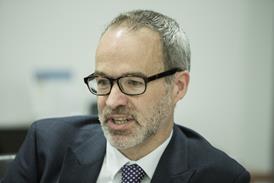Leo Ewbank outlines the findings of a recent research into the future of commissioning and new approaches to local planning
For nearly 30 years the status of commissioning within the English NHS has ebbed and flowed.
Talk of a ‘commissioner-led’ service has given way to a more ambiguous narrative today. National leaders have suggested system working will bring down the curtain on the purchaser – provider split.
Aside from signalling a consolidation of clinical commissioning group numbers, the NHS long-term plan avoided spelling out the future of commissioning. In April, a big tranche of CCG mergers will take effect – with all the upheaval that entails for staff.
It would be understandable if optimism about commissioning – and among staff working in the sector – was short on the ground.
Yet in recent months the King’s Fund has undertaken a project exploring how commissioning is changing and, rather than apprehension, we found commissioners exuding energy and optimism based on thinking and working differently.
For the project we visited three places: Bradford district and Craven, South Tyneside and Tameside and Glossop. Each is different and developing its own organisational arrangements to plan services. But some of the big ideas guiding their approaches are strikingly similar.
Competition is no longer a primary tool of service improvement. Risk is shared among partner organisations with contracts taking a back seat to relationships. Performance issues – both operational and financial – are becoming a collective responsibility rather than the buck stopping at the desk of any one organisation.
Monitoring is for the purposes of improvement, rather than accountability. Collaboration is the watchword as local leaders realise it offers the greatest opportunities to meet their population’s needs while making best use of resources.
Putting ideas into practice
On one level, these ideas are not new. National leaders have been emphasising collaboration for years, and legislation is planned to help clear the path. Yet, the CCGs we visited have found ways to put these ideas into practice within the current framework.
What does it mean in practice for the work of planning, procuring and monitoring services? Their practical arrangements vary.
In Bradford district and Craven, service planning is happening in partnership arrangements which span the commissioner – provider divide. These bring together local commissioners and providers, to shape decisions over service priorities and resource allocation, with those decisions then channelled – and formally taken – through traditional organisation-based governance structures.
Leaders in South Tyneside are stripping out bureaucracy and driving local service change – both operational and cultural. They are doing it through an ‘Alliance Leadership Team’ which brings together stakeholders from across its patch to build relationships and tackle tricky issues.
Reducing the use of competitive tendering is important, but is only one part of the change. All stages of the commissioning cycle – strategic planning, procurement, and monitoring and evaluation – are being rethought to promote collaboration
Tameside and Glossop has developed a single integrated commissioning fund spanning health and social care, plus other local public services. Decision-making rests with a strategic commissioning board, made up of GPs and elected local councillors, with a remit spanning the full portfolio of services.
Looking across these sites, their approaches add up to a paradigm shift in thinking about commissioning and the role of commissioners.
Reducing the use of competitive tendering is important, but is only one part of the change. All stages of the commissioning cycle – strategic planning, procurement, and monitoring and evaluation – are being rethought to promote collaboration.
In practice, the separation between providers and commissioners is being eroded and commissioners are increasingly acting as convenors of the local system. Where previous models of commissioning have set local partners against one another, these new approaches are bringing partners together.
Underpinning these changes is the belief that change in health services can be driven by focusing on incremental improvement through collective action.
Role of local and national bodies
The emergence of these approaches does raise some questions for local systems and national bodies in the future.
At the operational level, the disciplines associated with spending public money effectively will still need to be ensured. In particular, robust governance and transparency need to be maintained, and potential conflicts of interest need to be managed.
More thought needs to be given to engaging local stakeholders – particularly voluntary, community and independent-sector providers – and to ensuring the voice of patients and the public is heard.
Our research found real collaborative energy at the more local ‘place’ level, where CCGs are working across footprints approximately coterminous with local authority boundaries
At the more strategic level, the question of how best to support collaborative commissioning within integrated care systems remains open. National bodies have encouraged a one-to-one match between CCGs and integrated care systems.
Yet our research found real collaborative energy at the more local ‘place’ level, where CCGs are working across footprints approximately coterminous with local authority boundaries. Working at this level neatly aligns with other services, such as social care and public health, and has the potential to foster stronger relationships as there is a smaller number of stakeholders.
Merging CCGs by default risks undermining the promise of these ‘bottom-up’ arrangements.
How strong place-based planning functions can fit with wider system working – and where power to set local strategy really rests – is a key question for the future. The places we visited illustrate the potential.





























1 Readers' comment